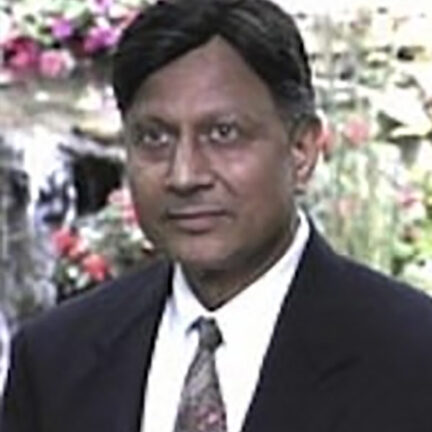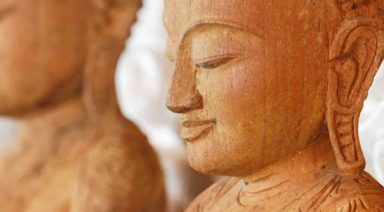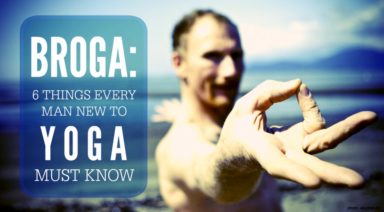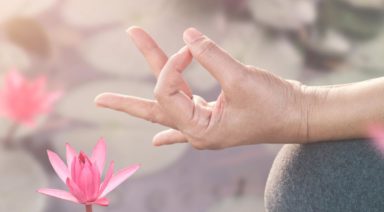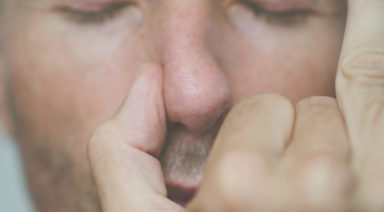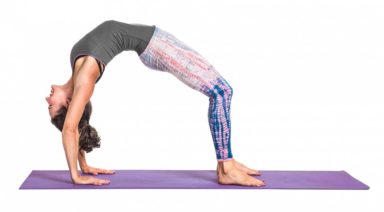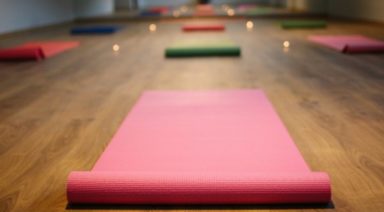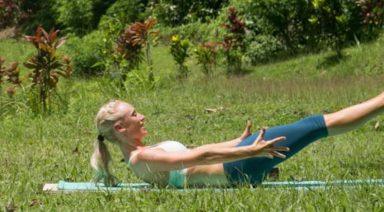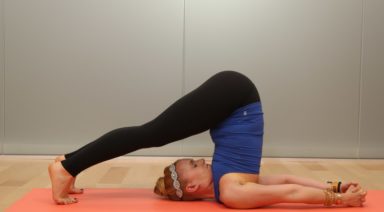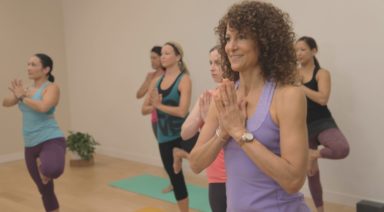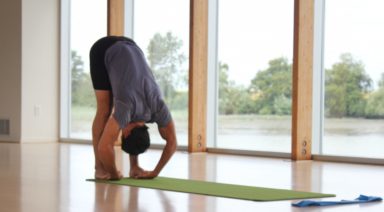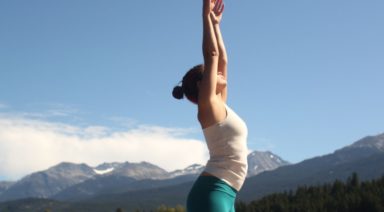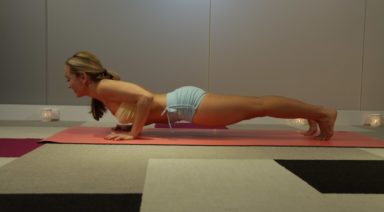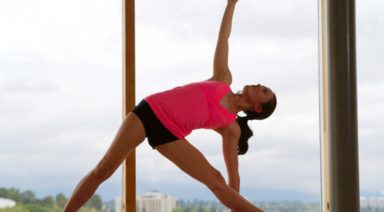Yoga Breathing for Health

Yoga Breathing for Health: Breathe Slowly, Exhale Fully — Sixteen Ways to Slow Breathing and Lengthen Exhalation
Almost everyone including people with asthma or COPD (Chronic Pulmonary Obstructive Breathing) can benefit from breathing slowly and exhaling more completely. Benefits of slow breathing and longer exhalation are many. To wit: Greater control over breathing; reduction in shortness of breath and breathing discomfort; increase in physical and mental relaxation; relaxed breathing and more open airways which can transport air in and out more effectively.
By breathing slowly and lengthening exhalation relative to inhalation, lungs can be more effectively emptied out and filled, old and stale excess air eliminated and hyperventilation (over breathing) and hyperinflation of lungs (enlargement of lungs due to surplus air) 1 can be modified. Actually, benefits of the breathing pattern of slow breathing and longer exhalation are too numerous to list here.
You are likely to hear from yoga teachers who teach a breath-centered practice such statements as, “Exhalation is the key,” “Take care of the exhalation and inhalation will take care of itself,” or simply the instruction, “Exhaaale!” encouraging you to prolong your exhalation. These instructions may seem very counter intuitive because most people instinctively believe inhalation is most important. Yogis from ancient times practiced conscious and controlled breathing, called “pranayama.” They extensively worked on strengthening abdominal muscles in order to exhale more fully. Their morning breathing practices to a large extent consisted of gentle, slow and long exhalation and inhalation and only to a small extent that of vigorous exhalation and inhalation. In this article, we will discuss a number of gentle and slow breathing techniques.
Try them and see which one’s work best for you.
Pranayama and breath coordinated yoga postures (asanas) can help us to slow our breathing and lengthen our exhalation. I have personally practiced some time or the other all the techniques discussed in this article. They have helped me to reduce shortness of breath and increase my stamina and exercise tolerance.
Developmental Work for the Breathing Exercises
- Maintain breath awareness for most part of the day. Stay conscious of your breathing whether you experience any breathing difficulty or not. Try to maintain breath awareness while walking or performing other exercises and activities. Develop a keen sense of breath awareness at all times, whether resting or exerting
- Walk every day
- Perform gentle stretches and upper body exercises including trunk flexion several times a week.
- Become an expert of Pursed-Lip Breathing (PLB): PLB is well known to build positive air pressure in the airways in order to exhale more effectively and completely. Instructions for PLB are widely available in the respiratory literature. To instruct briefly, inhale through your nose, purse your lips like you would while whistling or kissing and exhale maintaining consistent flow and pressure of breath. The technique of pursed lips can be applied to many of the exhalation techniques described in this article. The ancient technique of chanting “Om” in India is a type of PLB technique.
Cautions/Guidelines
- Practice breathing exercises while maintaining physical and mental relaxation.
- Don’t strain your breath! Rest in between as long, and as many times as needed. Don’t force your breath. Follow the mantra, “Coax it. Don’t force it.!” Stay within your comfort zone at all times.
- Start with one or two techniques. Gradually increase the length of the breath and the number of repetitions of each technique.
- Some techniques may feel more comfortable and natural to you than the others. Adopt the ones you like for your daily practice.
- Know your limits. Some days you may not be able to do as much as you did the other day. Still another day, you may find a technique difficult which was easy the day before. Know what you can do that day and how far you can challenge yourself that day by recognizing when you are approaching your exertion limit, and slowing down or stopping before you develop severe shortness of breath.
The sixteen (16) ways to cultivate slow breathing and lengthening exhalation are divided into following categories:
- Predominantly Physical techniques
- Predominantly Mental Techniques
- Breath Manipulation Techniques
- Breath Vocalization
- Alternate Nostril breathing Techniques
- Instrumental
Don’t take the categories literally or mutually exclusive. They are loose “baskets” to hold somewhat similar techniques in order to make it easier to put our arms around them.
Predominantly Physical Techniques:
- Breath coordinated spinal movements (asana)
- Relaxation pose (Shavasana): Relax and exhale! Exhale and Relax!
Predominantly Mental Techniques
- Forming intention for longer exhalation (Sankalpa)
- Tracking the Breath flow (Sakshi)
Direct Breath Manipulation
- Silently count the length of each breath (shavasa-prashavas sankhya)
- Count only the exhalations (Prashvas ganana)
- Inhale partially, exhale fully (visham vritti 1)
- Inhale passively, exhale actively (visham vritti 2)
- Segmental Exhalation (Viloma krama)
- Body locus breath (Yoga nidra breathing)
Breath Vocalization
- Humming breath (Bhramri)
- Vowel singing (Omkara)
- Whisper chanting
Alternate Nostril Breathing Techniques
- Partially closed nostril alternate nostril breathing (anuloma viloma variation)
- Exhaling through the dominant nostril (nadi shodhna variation)
Instrumental
- Exhalation props (prashvasa sopashraya)
Predominantly Physical Techniques:
- Breath coordinated spinal movement (Asana): Utilize postures which facilitate exhalation such as forward bending, lateral flexion and spinal twist because they make it easier to exhale more fully. Examples:
- In the standing, sitting or kneeling position, while exhaling slowly bend forward
- In the sitting position, press the floor or hold the chair seat with one hand while exhaling raise the other arm and bend laterally
- In seated or reclining position, while exhaling perform an abdominal twist. Select low intensity stretches to avoid excessive work for the muscles. Perform several repetitions of the same posture slowly and smoothly. Progressively lengthen your exhalation during these repetitions.
By coordinating and manipulating the speed of breathing and movement into and out of a posture you can progressively lengthen your exhalation. Example: Sit on a chair with arms by your side. Press hands on both sides of the seat. While elongating your spine, inhale to of your lungs. While exhaling, start bending forward. Adjust the speed of forward bending movement so it lasts as long as your exhalation does. The extension of exhalation, in parts, depends on how slowly you bend forward, how slowly you exhale while bending forward and how far forward you bending.
- Relaxation Pose (Shavasana): Relax and exhale! Exhale and relax! Relaxation is the master skill for breathing retraining. Shavasna, the reclining relaxation pose is excellent for relaxing and deepening the breathing and extending exhalation. When you are relaxed, breathing automatically gets slow and soft, diaphragmatic breathing restored and all stress related breathing irregularities are reduced. Several times a day, take a few minutes each time to relax physically and mentally. With calm and quiet mind, relax the whole body. Imagine you are in a peaceful, quiet and relaxing place. Relax the entire face including the jaw, neck and shoulders and then the rest of the body. Continue to relax and exhale. With each exhalation, relax even more than before.
Predominantly Mental Techniques:
- Forming intention (Sankalpa) for longer exhalation: Intention is well known to inspire action and affect the outcome. Therefore, form the intention of slowing your breathing and lengthening your exhalation. Be patient and relaxed about your intention. You can’t change your breathing in a hurry. Keeping your new intention at the back of your mind let the exhalation extend. When you remain calm and relaxed and mindful of your intention, breathing is likely to become soft and slow, and exhalation might begin to “stretch” longer than inhalation. Try not to inhale deeply or fully. Allow the exhalation to extend longer without straining your breath.
- Tracking the breath flow (Sakshi): Bring your mind to breathing. Don’t judge it, simply witness it. Track the flow of the breath during inhalation and exhalation without tension, rush or anxiety. While inhaling, move your attention downward from chest to abdomen. While exhaling, move your attention upward from pelvis to solar plexus. In other words, track the downward flow of breath as you inhale and upward flow of breath as you exhale.
According to the Viniyoga tradition and in my own experience as a person with COPD, tracking inhalation downward and exhalation upward is enjoyable and comfortable. However, some people are more comfortable with tracking inhalation upward and exhalation downward. Whichever works better for you is the one you should practice. There is a cute saying in yoga circles, “Breath flows where attention goes.” So it all works out. All you need to do is to track the breath flow. Paying attention to the direction of the breath flowing upward and downward in the ribcage and abdomen is likely to relax you, slow the breathing and lengthen the exhalation.
Direct Breath Manipulation Techniques
- Silently count the length of each breath (Shvasa-prashvasa sankhya): Simply counting silently in head while breathing automatically slows and relaxes the breathing for most people. Example: While inhaling, silently count in your head by saying “one thousand one” “one thousand two” “one thousand three” “one thousand four.” While exhaling also silently count, “one thousand one” “one thousand two” “one thousand three” “one thousand four.” As you continue, increase your count for exhalation, for example, up to 1005 or 1006 while still keeping the inhalation up to 1004. Maintain the ratio of inhalation and exhalation as 1 to 1.5 or 1 to 2. Does keeping a count while breathing make you tense? Do you try very hard to maintain the same ratio or try to lengthen the breath too early and too hard?
It is important to be patient and relaxed about breathing. If counting makes you tense in trying to keep the same number then let go of the count. Use your judgment to maintain the exhalation longer than inhalation (refer to “Inhale partially, exhale fully.”). All you have to do is to inhale less fully and exhale more fully. If you feel all right about breath counting, adopt the practice in your daily life. Wherever and whenever you remember to do it, start counting (1001, 1002, 1003 and so on) as you inhale and exhale. You may do this while sitting, standing, walking, working, performing an activity or exercising.
- Count only the exhalations (Prashvasa ganana): Inhale briefly. Exhale and towards the end of exhalation say silently or out loud, “One!” Again, inhale briefly. Exhale and as you near the end of that exhalation say, “Two!” Repeat and with each subsequent exhalation, count the next number “three,” “four” and so on until you complete ten exhalations in this manner. To increase the sense of relaxation and lengthen exhalation, each time as you exhale, let your body become loose and limp and say the number in a soothing and soft tone such as, “Onnne!” “Twooo!” “Threee!” and count up to 10 exhalations. If time permits, repeat another round of ten exhalations.
- Inhale partially, exhale fully (Viloma visham vritti 1): When you inhale, simply stop inhaling or 2/3rd or 3/4th of way, but exhale more fully without forcing or straining your breath. Progress gradually in favor of longer exhalation. Maintain the ratio of 1: 1.5 or 1: 2 between inhalation and exhalation. In other words, keep the exhalation one and one-half time or twice longer than the inhalation. Example: 4 second inhale and 6-8 seconds exhale or 5 seconds inhale and 7-10 seconds exhale.
- Inhale passively, exhale actively (Viloma visham vritti 2): Inhale passively by simply allowing the inhalation process to occur, but while exhaling, mildly engage the abdominal muscles by gently pulling the lower belly towards the back. It is gentle “forced expiration.” Use only gentle force and mild contraction of abdominal muscles while pulling in the navel towards the back.
- Segmental Exhalation (Viloma krama): Inhale in one continuous stretch but split your exhalation in two segments. Here are the instructions: Inhale in one continuous breath. Then, slightly contract your lower belly, that is, pull it in towards the back from pelvis to the navel and exhale the way. Pause for a second or two and then contract your belly from navel up to the solar plexus while finishing the other half of your exhalation. When you get really good at 2-segment exhalation, you may 3-segment exhalation. For example: Inhale! Pause for a 1-2 seconds and then exhale 1/3rd while contracting perineum to pelvis. Pause for 1-2 second and exhale another 1/3rd while contracting from pelvis to the navel. Pause for 1-2 seconds and complete the last 1/3rd of the exhalation while contracting the abdomen from navel to the solar plexus.
- Body locus breath (Yoga nidra breathing): True, we all breathe in and out through nose and occasionally the mouth. But in this exercise we IMAGINE breathing in and out through other body locations. Here is the exercise in imagination in order to increase the exhalation: Each time as you inhale, imagine the in-breath entering through the crown of your head and ending in the heart region. Each time as you exhale, imagine the out breath starting from the heart region going all the way down and exiting through the toes and soles of the feet. In short, imagine inhaling through the crown of the head to the heart and exhaling from the heart to the toes and soles of the feet. This exercise can be done while sitting or lying down, though most relaxing when you are lying down.
Breath Vocalization
- Humming breath (Bhramri): Inhale briefly, softly and slowly with your nose. Exhale with soft humming sound prolonging your exhalation but without straining your breath.
- Vowel singing (Omkar): Inhale briefly, softly and slowly with your nose. While exhaling sing a vowel such as “aahmm” “eeem” or “ooomm” prolonging your exhalation but without straining your breath. If you don’t fancy singing vowels, you may sing consonants to prolong your exhalation. Example of consonant singing: Inhale briefly, softly and slowly with your nose. While exhaling sing “Sa, ta, na, ma,” “Sa, ta, na, ma,” “Sa, ta, na, ma,” “Sa, ta, na, ma,” as long as your exhalation lasts without straining your breath.
- Whisper chanting: Begin singing these four consonants in a soft whisper: “Sa, ta, na, ma,” “Sa, ta, na, ma,” “Sa, ta, na, ma,” “Sa, ta, na, ma,” and so on as long as your exhalation lasts without straining your breath. As you begin inhaling, continue singing these four consonants in soft whisper for a brief inhalation (filling in one half or two thirds of your lungs). Thus, form a continuous cycle of singing the consonants in whispering breath, inhaling and exhaling without straining your breath. The moment you feel any sign of fatigue or strained breath, stop and take rest. Whispering is unique because you can continue singing during exhalation as well as inhalation. Your exhalation should remain longer than inhalation. For example, repeat sa, ta, na, ma 4-5 times during inhalation and 6-8 times during exhalation.
Alternate Nostril Breathing Techniques
- Partially closed nostril alternate nostril breathing (Anuloma-viloma variation): Alternate nostril breathing should be done on a day when the nostrils are not blocked. In the traditional alternate nostril breathing, we keep one nostril fully open for breathing and the other fully closed. But in this variation of alternate nostril breathing, instead of keeping the nostril completely open, we partially close. By partially closing the nostril we create a “valve” for breathing in and out. Technique for “valved” nostril breathing: Close one nostril completely by applying the pressure of thumb or fingers on the flap of the nostril (the lower portion of the nose). Partially close the other nostril by gently pressing the cartilage in the upper nose with your fingers or thumb.
Thus, the valved nostril remains partly open for exhalation or inhalation and thus helps you to control the flow and the volume of the breath. By crafting a valve in the nostril, you can further increase the differential between inhalation and exhalation. You can close inhaling nostril with little more pressure and a little less pressure at the exhaling nostril. In this way, you can further affect the flow and amount of air you exhale and inhale. At any rate, make sure you manipulate the valve in such a way that exhalation works out to be longer than inhalation.
- Exhaling through the dominant nostril (Nadi shodhana): Several times a day, there is a shift in breath flow from one nostril to the other. As a result of this shift one nostril registers greater flow of breath compared to the other. This phenomenon is refered to as, “ultradian rhythm of the nasal cycle.”2 Incidentally, the shift in nasal cycle is also associated with the shift in the dominance of the right or left brain hemisphere. To identify which nostril is dominant at a given time, close one nostril and exhale against the back of the hand. Now repeat the process with the other nostril. Which nostril appears to exhale more fully? Utilize the dominant nostril for exhalation and passive nostril for inhalation for just a few breaths.
Instrumental
- Exhalation Props (Prashvasa sopashraya): There are a number of aids we can use to extend exhalation. To wit: woodwind instruments such as flute; harmonica; whistle; whistling, etc.
End Notes
- For a comprehensive discussion of the physiology of overinflated lungs and hyperinflation, refer to Deane Hillsman, M.D website on COPD self-help at http://www.sierrabiotech.com/bt_copd_home.html
- David Shannahoff-Khalsa reviews studies of lateralized ultradian rhythms of EEG during wakefulness showing a correlation between hemispheric dominance and the nasal cycle. Refer to Khalsa’s paper The Ultradian Rhythm of Alternating Cerebral Hemispheric Activity, (International J. of Neuroscience, Vol 70, issue 3 & 4 June 1993, pp 285-298.
Changes in the relative fight-left brain hemispheric activity occurs several times a day and the hemispheric changes appear to be associated with the right left nostril air flow, referred to as “nasal cycle.” At any given time, one nostril is more open and has the greater amount of air flow which may partly be due to congestion and decongestion of the veins lining the nasal mucosa. This alternation of right and left hemisphere dominance and changes in the air flow in the right and left nostrils occur at varying intervals in the individuals ranging from about half an hour to 5 hours with peaks between 90-200 minutes during waking. This phenomenon also occurs during night at varying time intervals for individuals (some of the results of Google search for “Ultradian rhythm of nasal cycle”).
Pranayama Benefits and Techniques

Practitioners of traditional Indian medicine (Ayurveda) tell us that the human body is made up of five separate elements (earth, water, fire, wind and space), three separate humors (called dosas) and our consciousness.
The earth element, according to the yoga scholar Françoise Wang-Toutain et al., forms the solid components of our body, and space forms the internal cavities through which all of the other elements flow. Fire and water are propelled by wind. Wind, in this instance, refers not only to our gross breath, but also to the basal energetic forces that govern all of our bodily functions.
The traditional name for these energetic winds is “vayu”. Said to be ten in total, these vayus are sub-units of a “master” wind (pranavayu) that joins our mind together with elements from our mother and father at the moment of our conception.
As we continue to develop in the womb, the pranavayu sub-divides itself into five primary and five subsidiary winds. These winds then provide the energy for essential bodily functions such as circulation, elimination, assimilation, respiration and locomotion.
When the vayus function efficiently, the body enjoys good physical health and mental clarity. When the winds become imbalanced or the channels through which they flow become damaged and sickness, disease and ill health arise.
Wang-Toutain et al. states that control of the breathing process (pranayama) provides one of the most direct methods to expand the life force and balance the vayus. Because of this, traditional Hatha Yoga practices rely heavily on pranayama practices for greater health and vitality.
Benefits of Pranayama
The Hatha Yoga Pradipika, a seminal text on pranayama practices, mentions a number of benefits that can arise as the energy winds are drawn into balance. These benefits include a “glowing countenance”, weight reduction, improved digestive capabilities, and a reduction in symptoms from a number of diseases.
Modern researchers have found that the benefits of yoga and pranayama practices include improvements in mood, increased energy, stress and anxiety reduction, better neurological functioning, and improved physical health.
A caveat: It’s important to note that the pranayama practices included in the Hatha Yoga Pradipika are typically done as part of a holistic regimen that also includes a number of additional purification techniques, dietary shifts and herbal remedies. If you wish to include pranayama practices as part of a healing regimen, it’s always best to practice these exercises under the guidance of a trained Ayurvedic specialist.
Pranayama Techniques for Home Practice
If you wish to practice pranayama techniques for yourself, it’s always important to begin slowly. Many traditional pranayama exercises utilize breath retention exercises in order circulate energy through the body. When overdone, these exercises can strain the lungs and create further imbalances in the energy system, so it’s always important to do them slowly, gently and according to your capacity.
*Please note that breath retention practices are contraindicated for expectant mothers.
How Should I Sit When Practicing?
Swami Svatmarama recommends the full lotus pose for pranayama practitioners. While the lotus provides one of the best supportive bases for those who can do it, the posture is notoriously challenging if your hip muscles are tight or you are simply not used to sitting on the floor for extended periods of time.
Because of this, you should feel free to sit in any seated posture that will allow you to keep your spine straight. If you are most comfortable sitting in a chair, feel free to use one.
Pranayama Exercises
The first exercise in the Hatha Yoga Pradipika is an alternate nostril breath with a breath retention at the end of every inhale. If you’ve never done pranayama before, this can be pretty challenging.
Because of this, I’ve included two simple exercises that can be used to prepare for the breath retention practice included in the Pradipika. If you’ve never done pranayama before, practice the following two exercises daily for at least two weeks each before going on to the third.
Sama Vrtti Pranayam (the Breath of Equal Duration)
Regular practice of this pranayama technique will help you to develop the ability to control the duration of your breath without force or strain. Benefits of this pranayama include stress reduction, increased energy, a deeper lung capacity and heightened ability to concentrate.
- Find your way to a comfortable seated position.
- Direct all of your awareness to your inhale and exhale.
- Make your inhale and exhale equal by inhaling to a count of five, four, three, two one, and exhale to the same count.
- With practice, increase the duration of each inhale and exhale until you can breath in and out to a slow count of ten.
- Practice a minimum of seven repetitions or as many as you are comfortable with.
Nadi Shodanam Version 1 (Energy Channel Cleansing Breath)
- Take attention to your right hand. Place the tip of the index and middle finger on the space between your eyebrows.
- Use your thumb to block your right nostril, and inhale fully through the left.
- Block your left nostril with your thumb, and exhale fully out the right.
- Reverse the process. Breathe in through the right side, and out through the left.
This cycle completes one full round.
Note: As you breath in and out, attempt to make your inhales and your exhales approximately equal in length, just as you did in Sama Vrtti Pranayama. Mentally count the length of the breath, and expand the count as the breath becomes easier.
Begin with seven full rounds of this breathing pattern. As it becomes easier, work up to more in accordance to your capacity.
Nadi Shodanam Version 2 (the Alternate Nostril Breath)
After a few weeks of practice, you may find that you’re ready to begin Nadi Shodanam. This powerful practice is the first breathing exercise mentioned in the Hatha Yoga Pradipika.
The breathing pattern in this form of Nadi Shodonam is identical to what you’ve already learned with one notable exception: in this practice, the breath is retained at the top of every inhale.
Holding your breath draws prana (life force) into your body and allows the energy to circulate more fully through your system. With time, this process can help to balance your energy winds and repair damage to the energy channels through which your prana flows.
Swami Svatmarama writes that this pranayama has the potential to fully purify the body’s energy channels when practiced four times per day for three months.
To practice:
- Bring your attention to your right hand. Place the tip of your index and middle finger on the space between your eyebrows.
- Use your thumb to block your right nostril, and inhale fully through the left.
- Hold your breath at the top of your inhale for as long as is comfortable
- Block your left nostril with your thumb, and exhale fully out the right.
- Reverse the process. Breathe in through the right side, hold your breath at the top and breathe out through the left.
Once you’ve grown accustomed to the breath, practice making your inhale, retention, and exhale equal in length.
Kapalabhatti Pranayam
Kapalabhatti Pranayam (the skull-shining breath) is one of six additional cleansing practices mentioned in the Hatha Yoga Pradipika. Benefits of this exercises include increased energy and heightened mental clarity.
In this practice, exhales are short and active and inhales are passive. Inhales occur as a result of forcing the breath out in short, quick bursts through the nostrils (sort of like the breath that you use to blow out a birthday candle, only through the nose instead).
To begin:
- Find a comfortable seated position.
- To begin the first round of kapalabhatti, inhale deeply through your nose, and then exhale half of your air.
- Once your lungs have emptied approximately halfway, squeeze the muscles of your belly down and in to press air out through your nose in a quick burst. Relax your belly and let the lungs effortlessly fill to halfway again.
- Repeat according to capacity, building up to three rounds of fifty repetitions.
Note: Becoming comfortable with Kapalabhatti pranayama can take some practice, so go slowly at first. The slower tempo will allow you better feel the active nature of the exhale and the passive nature of the inhale. Pay attention to any feelings of dizziness or breathlessness and stop the exercise for the day if they arise.
One Fluid Practice
At first, it’s best to practice each of these exercises one at a time. For example, you might consider practicing Sama Vrtti Pranayama for a few weeks before beginning Nadi Shodanam version 1. Once you’ve got it down, practice both exercises in one session.
When you’re ready to progress, add the next practice in the cycle until you are able to do all of the breathing exercises together as one full sequence. As you practice, rest as much as necessary and avoid force or strain.

